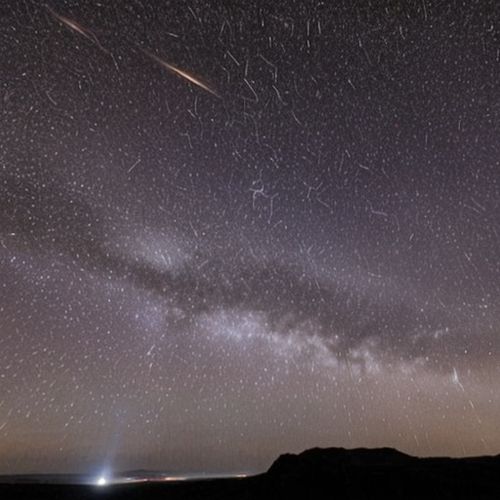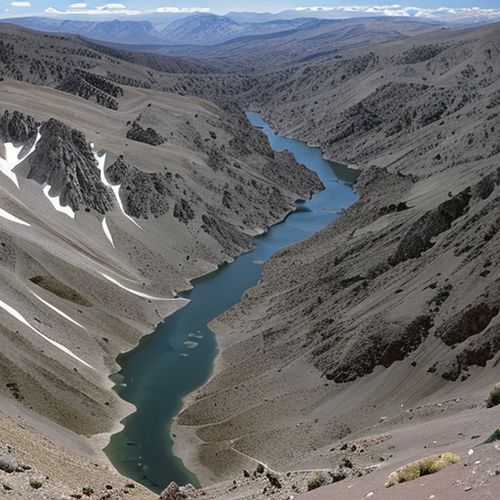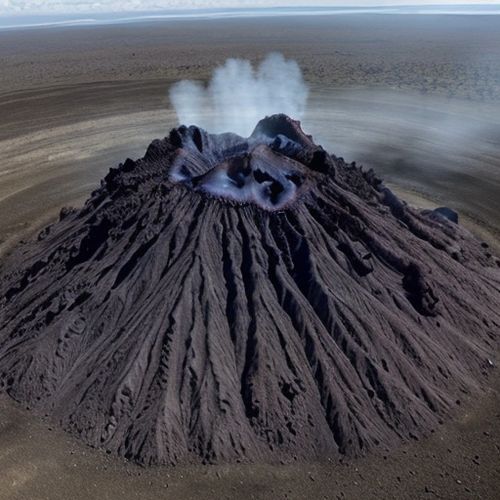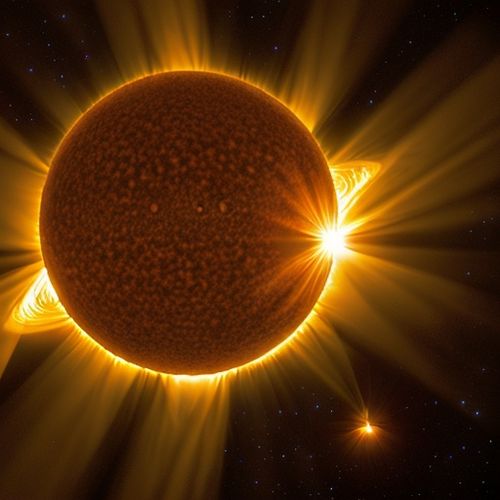In a remarkable feat of scientific achievement, the world’s largest solar telescope has captured an image of the sun in unprecedented detail, revealing its fiery complexity and offering crucial insights into the behavior of our nearest star. This groundbreaking image, taken by the US National Science Foundation Daniel K. Inouye Solar Telescope’s new Visible Tunable Filter (VTF), provides a closer-than-ever, three-dimensional view of the sun’s surface. The close-up reveals continent-size sunspots, areas of intense magnetic activity where solar flares and coronal mass ejections (CMEs) are likely to occur. These detailed images are not just visually stunning; they are essential tools for scientists seeking to understand and predict potentially dangerous solar weather.
The Power of the Visible Tunable Filter
The VTF is a revolutionary instrument capable of building a detailed, three-dimensional view of the sun’s surface. Unlike traditional cameras, which capture light across multiple wavelengths simultaneously, the VTF filters measurable wavelengths one by one. This process, akin to tuning a radio to different frequencies, allows scientists to probe the various layers of the sun’s surface and observe the interactions between them.
The VTF achieves this by using an etalon—a pair of glass plates separated by mere microns. The principle is similar to that of noise-canceling headphones: when two waves with similar wavelengths travel on the same or intersecting paths, they can either cancel each other out or reinforce each other. By trapping light waves between the plates, the VTF can selectively pass or cancel specific wavelengths, creating detailed spectral scans.
In just a few seconds, the VTF captures hundreds of images through different filters and combines them into a three-dimensional snapshot. This allows researchers to study the temperature, pressure, velocity, and magnetic field structure at different layers of the solar atmosphere. "Seeing those first spectral scans was a surreal moment. This is something no other instrument in the telescope can achieve in the same way," said Dr. Stacey Sueoka, a senior optical engineer at the National Solar Observatory.
The Importance of Understanding Solar Weather
The sun’s activity has a profound impact on Earth. Solar flares and CMEs can interact with Earth’s electromagnetic field, causing disturbances to key infrastructure such as electrical power grids and satellite-powered communication networks. One of the most famous examples is the Carrington Event of 1859, a massive solar storm that caused fires in telegraph stations. Understanding the physical drivers of these phenomena is crucial for protecting our technology and, ultimately, our way of life.
The sun operates on an 11-year cycle of high and low magnetic activity, known as the solar cycle. In October, scientists from the National Oceanic and Atmospheric Administration (NOAA), NASA, and the international Solar Cycle Prediction Panel announced that the sun had reached its peak of activity, called the solar maximum. During this period, the sun’s magnetic poles flip, and more sunspots appear on its surface. The current solar maximum is expected to last for several months, making it an ideal time for the Inouye Solar Telescope to capture detailed images of the sun’s dynamic surface.
The Mechanics of Sunspots
Sunspots are regions of intense magnetic activity that appear darker and cooler than their surroundings. They are often associated with solar flares and CMEs. According to Mark Miesch, a research scientist at the Cooperative Institute for Research in Environmental Sciences at the University of Colorado Boulder, sunspots act like "magnetic plugs" or tangles in the sun’s magnetic fields that prevent heat from reaching the surface. As a result, sunspots emit less light and appear darker in images. Despite their relative coolness, sunspots are still hotter than any oven on Earth.
The apparent texture of the sun’s surface comes from the varying densities and temperatures within its layers, which are similar to those of an onion. By tuning into different wavelengths, the VTF can probe these layers and observe the interactions between them. This detailed view allows scientists to study the complex processes that drive solar activity and its impact on Earth.
The Technological Marvel of the VTF
The VTF represents over a decade of development and is considered the heart of the Inouye Solar Telescope. Located at the NSF’s National Solar Observatory on Maui’s 10,000-foot Haleakalā volcanic mountain, the VTF spans multiple stories of the telescope. The instrument was designed and built by the Institute for Solar Physics in Germany, and its parts were shipped across the Atlantic and Pacific oceans before being reassembled at the observatory.
The VTF’s ability to capture detailed spectral scans is a significant technological achievement. "The significance of the technological achievement is such that one could easily argue the VTF is the Inouye Solar Telescope’s heart, and it is finally beating at its forever place," said Dr. Matthias Schubert, a VTF project scientist at the Institute for Solar Physics. The team expects the VTF to be fully operational and ready for use by 2026.
A New Era of Solar Exploration
The Inouye Solar Telescope’s VTF is part of a broader effort by scientists to better understand the sun and its stormy weather patterns. Other recent missions include the Solar Orbiter, a joint mission of the European Space Agency and NASA launched in 2020, and NASA’s Parker Solar Probe, the first spacecraft to "touch" the sun. These missions, combined with the capabilities of the Inouye Solar Telescope, are ushering in a new era of solar exploration.
The detailed images captured by the VTF are not just scientific achievements; they are also works of art that reveal the sun’s beauty and complexity. Each image is a snapshot of the dynamic processes that drive solar activity, from the formation of sunspots to the eruption of CMEs. By studying these processes in detail, scientists hope to improve our understanding of solar weather and develop better predictive models.
The Future of Solar Research
The Inouye Solar Telescope’s VTF is poised to revolutionize our understanding of the sun. By providing detailed, three-dimensional views of the sun’s surface, the VTF allows scientists to study the complex interactions between the sun’s magnetic fields and its plasma. This detailed view is essential for understanding the drivers of solar activity and its impact on Earth.
As the VTF becomes fully operational, it will join a global network of instruments dedicated to monitoring the sun. Together, these instruments will provide a comprehensive view of solar activity, from the formation of sunspots to the eruption of CMEs. This data will be crucial for developing predictive models of solar weather and protecting our infrastructure from the impacts of solar storms.
The newly released image of the sun captured by the Inouye Solar Telescope’s VTF is more than just a stunning visual achievement; it is a significant step forward in our understanding of the sun and its impact on Earth. By providing detailed, three-dimensional views of the sun’s surface, the VTF allows scientists to study the complex processes that drive solar activity. This detailed view is essential for understanding the drivers of solar weather and developing better predictive models.
As we enter a new era of solar exploration, the Inouye Solar Telescope’s VTF stands as a testament to human ingenuity and our relentless pursuit of knowledge. By unlocking the secrets of the sun, we are not only expanding our understanding of the universe but also protecting our planet from the potential dangers of solar storms. The future of solar research is bright, and the VTF is leading the way.

By Sophia Lewis/May 6, 2025

By Olivia Reed/May 6, 2025

By William Miller/May 6, 2025

By Eric Ward/May 6, 2025

By John Smith/May 6, 2025

By Rebecca Stewart/May 6, 2025

By Benjamin Evans/May 6, 2025

By Eric Ward/May 6, 2025

By Eric Ward/May 6, 2025

By Daniel Scott/May 6, 2025

By Benjamin Evans/May 6, 2025

By Elizabeth Taylor/May 6, 2025

By James Moore/May 6, 2025

By Victoria Gonzalez/May 6, 2025

By Sophia Lewis/May 6, 2025

By Laura Wilson/May 6, 2025

By Olivia Reed/May 6, 2025

By David Anderson/May 6, 2025

By Olivia Reed/May 6, 2025

By Sophia Lewis/May 6, 2025